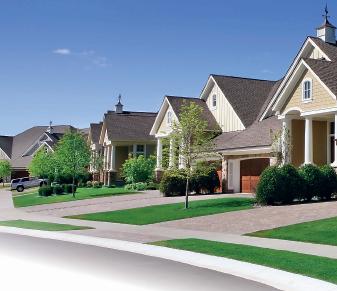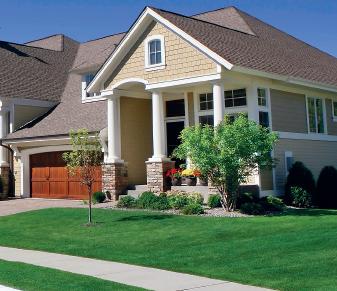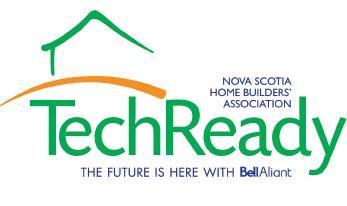
4 minute read
Home Automation
What’s at the Show... Home Automation
Houses are getting smarter, and the ability to control and automate every aspect of our homes – from unlocking the front door to drawing blinds and dimming lights, or even to catching a leak in the basement – has never been easier. And all from the touch of a button on a smartphone or tablet.
Advertisement
Jonathan Hartlen, General Sales Manager with Glubes, says they o" er almost everything you can think of in terms of home automation.
“We have clients who set a code to not only unlock their doors and disarm their system, but also trigger a romantic lighting scheme and turn on the # replace and music,” says Hartlen.
But it’s not just about $ ash and fun. Hartlen says their systems can be used to program heating, lighting, and blind retraction based on a homeowner’s schedule. There are also options to put in panic buttons and surveillance cameras.
“It’s very practical. If you have a 6,000 sq. ft. house and you don’t know if all of your lights are o" , it makes more sense to press one button and ensure they’re all o" – or program them to automatically shut o" at midnight every night.”
James LeBlanc, Senior Project Manager with Bell Aliant Regional Communications, says their NextGen Home Security service is “not your grandfather’s security system.”
“You’re getting a rock-solid security service with everything you would expect, as well as the ability to control everything – and get alerts – through your smartphone or tablet,” says LeBlanc. “All of our cameras even have an infrared feature, so they will automatically switch into that mode in lowlight or no-light situations – allowing you to see video footage of your home in pitchblack conditions.”
“It’s an exciting time. There’s so much you can do.”
LeBlanc says this “connectedness” helps people to feel more in tune with what’s happening at their house when they’re not there. Homeowners choose to use the
cameras and motion detectors for di" erent reasons – like receiving text alerts and video clips to ensure their children have gotten in safely from school, or seeing who comes to the door when they’re not home. Parents like to use the cameras as a modern baby monitor.
“We have a client who travels a lot and employs a dog-walker, and he says, ‘I like knowing when they walk the dog for 10 minutes, and when they walk the dog for 40 minutes,’” says LeBlanc.
But it’s more than just cameras. Appliance controllers allow you to plug in anything – home theatre, lamps, Christmas lights – and program exactly when you want it to turn on. Customers can also get special deadbolts and lever locks that are accessed by keyless entry codes, which eliminates the need to carry keys. They can also install $ ood sensors to let them know immediately if their hot water tank leaks or water creeps into their basement.
But without a solid internet connection, there’s no way for a homeowner to keep tabs on their home from afar. Mark MacMurtry, Team Lead of Product Strategy and Service Development with FibreOp, says they’re continuing to deliver the fastest internet speeds in Atlantic Canada – and it’s changing the way people stay connected.
MacMurtry says because they’ve built a “future-proof” network, they’ll always be able to maintain the fastest speeds as technology changes. And since FibreOp’s television service can connect TVs to the internet, MacMurtry says these TVs are now “mini-computers” that are capable of so much more than just watching shows.
“We can do all kinds of things now, and we’ll really start seeing more ways to leverage that.”
Paul Gaetz, Registered Communications Distribution Designer (RCDD) for Bell Aliant, says the TechReady infrastructure is becoming more and more relevant as time goes on.
“The more ethernet-based technology that is deployed in the home, the more value TechReady provides,” says Gaetz. “We are now recommending larger media panels, a single-mode backbone # bre to the media panel, and – for larger homes with a lot of metal ductwork – cabling for an access point should be included in the design.”
Homes are considered TechReady when they’re equipped with structured cabling – allowing users to move voice, data, and video service throughout their home. It can also include prepping for – or installing – satellite TV, home theatre, security systems, and remote lighting or heating.
Is your home wiring up to today’s standards?

What defi nes a home as TechReady?

There are basic requirements that need to be met in order for a home to be certifi ed as TechReady. The main element is structured cabling, allowing users to move voice, data and video services throughout their home. Additional TechReady options include roughin or installation of satellite TV, home theatre, security systems, remote lighting or heating and more.
Structured Cabling

Providing maximum fl exibility for the homeowner to move voice, data and video services throughout the home
With TechReady, customers are able to build tomorrow’s home – today. Audio & Video

A network dedicated to the distribution of sound and HDTV-ready tv/video throughout the home.
Telecom
Allowing for traditional phone lines throughout the home, plus wiring allowing for IP (Internet Protocol) services.
Home Networking

A Home LAN (Local Area Network) for connecting computers and associated devises, wired and wireless.
Home Automation
Home control systems for remotely monitoring energy management, lighting, home automation and more.










